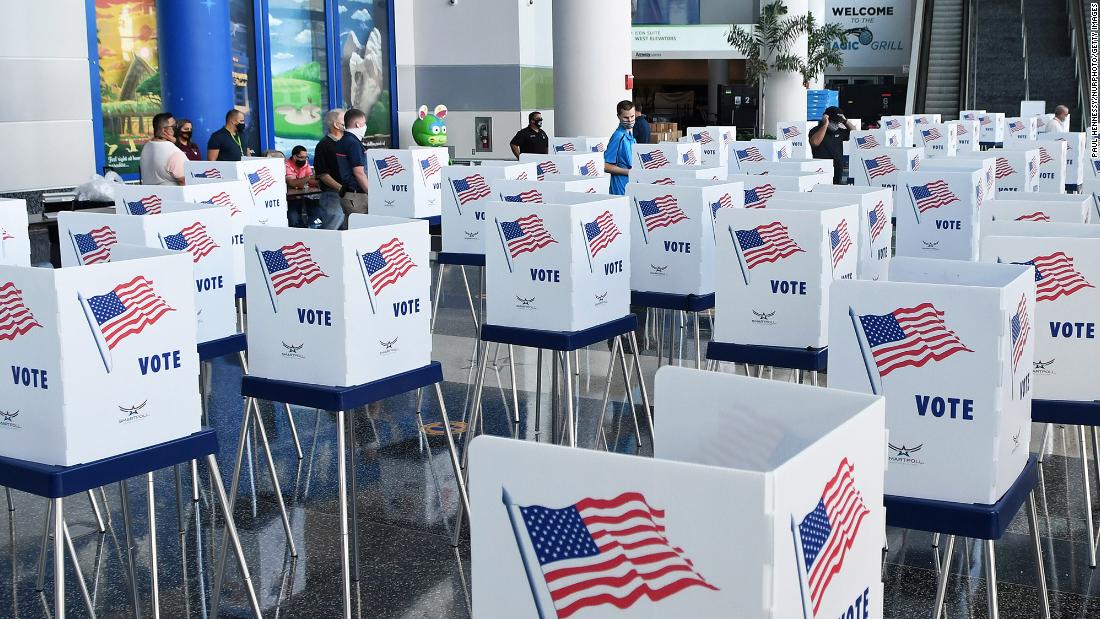
The moves from both camps come after an election with record turnout in which there were multiple false charges of fraud by prominent Republicans like former President Donald Trump.
But we should be clear: high turnout had little to do with why Trump ended up being a one-term president. Trump lost because he was an unusually unpopular president, and he likely would have been defeated if turnout looked like it did in 2016.
During his term in office, Trump's approval rating never climbed over 50% in the national polls. In the leadup to the 2020 election, his approval rating was stuck in the low- to mid-40s. The last president to overcome such daunting numbers was Harry Truman in 1948.
Elections that took place before the coronavirus pandemic ever took hold suggested Trump's Republican Party was in deep trouble. His party lost a lot of ground relative to 2016 in lower turnout special elections during the 2017 and 2018 period. Even in the special elections of 2019, which were weaker for Democrats, the Democrats were still outperforming their 2016 baseline.
These elections on the whole didn't have anywhere near the level of mail voting (a frequent punching bag for Trump) that the 2020 election did. In fact, new research from Stanford University suggests the expansion of mail voting had little to do with the higher turnout or with results in 2020.
The emphasis on the unique environment that led to a lot of early voting by mail in 2020 to explain high 2020 turnout seems especially strange when considering that 2018 had the highest turnout for any midterm in the last century. That was well before the coronavirus pandemic and shift to mail voting by a lot of Democrats.
What all these elections (the specials, 2018 midterms and 2020 presidential election) had in common was an unpopular president leading the Republican Party.
Indeed, it's not clear at all to me that the results would have been any better for the GOP had the 2020 turnout look like the 2016 election. Remember, that was an election that Trump won.
We can see this from three different sources: the network exit polls, the American National Elections Studies pre-election survey and the final Pew Research Center poll taken with verified 2016 voters.
In the network exit polls, the Biden vs. Trump margin among those who said they voted in the 2016 election was the same among ages 25 and older (i.e. the youngest exit poll age bracket among which all voters were eligible to cast a ballot in 2016) as it was overall among the same age group.
(The state exit polls in the three closest states with a 2016 recall vote, Georgia, Pennsylvania and Wisconsin, has an average shift of 0 points as well.)
In the ANES, Biden's lead actually expanded by a point among those ages 22 and older (i.e. old enough to have voted in 2016) and said they voted in 2016 as compared to all registered voters in that group.
Finally, in Pew Research Center's final 2020 pre-election poll, Trump's vote share was a single point higher (Biden's remained steady) among verified 2016 voters than it was among registered voters ages 22 and older. (The Pew poll suggested Biden's margin was about the same among 2018 midterm voters as it was among all registered voters.)
All of these shifts were within the margin of error. Most importantly, all of these polls used different methodologies and arrived at the same conclusion. Now, the election was close enough and the margin of error in this data is wide enough that we can't say what the exact Electoral College result in 2020 would have been with 2016 level turnout. (Future studies with larger sample sizes and voter files can hopefully answer that for sure.)
It's unlikely that more data will change the big finding that turnout was not the determinative factor of the 2020 result.
The lack of shift may be surprising to some, but it actually makes a lot of sense. The biggest group of voters who said they cast a ballot in 2020 but not in 2016 was non-college educated voters, according to the exit polls. That meant more non-college educated White voters (good for Trump) in the electorate, but also meant that voters of color made up a larger chunk of the non-2016 voters (bad for Trump).
Either way, Republicans are likely putting a bandaid on a bigger problem, if they think 2020 was about turnout. They'd be wiser to turn their attention to figuring out why a lot of Trump voters in 2016 turned against him in 2020.
"story" - Google News
March 08, 2021 at 12:07AM
https://ift.tt/3qkIp6d
How Republicans misunderstand the 2020 turnout story - CNN
"story" - Google News
https://ift.tt/2YrOfIK
https://ift.tt/2xwebYA
Bagikan Berita Ini















0 Response to "How Republicans misunderstand the 2020 turnout story - CNN"
Post a Comment